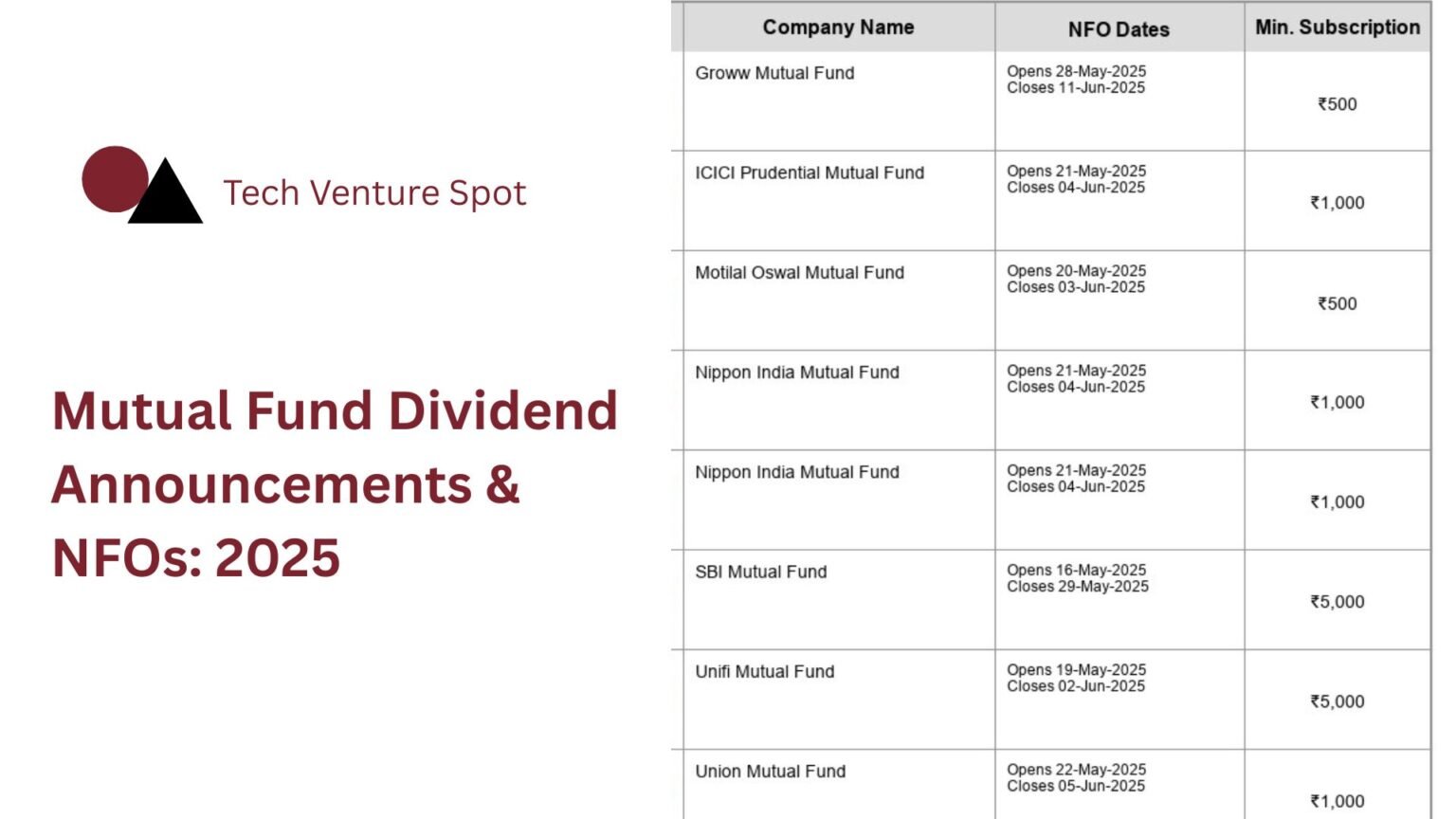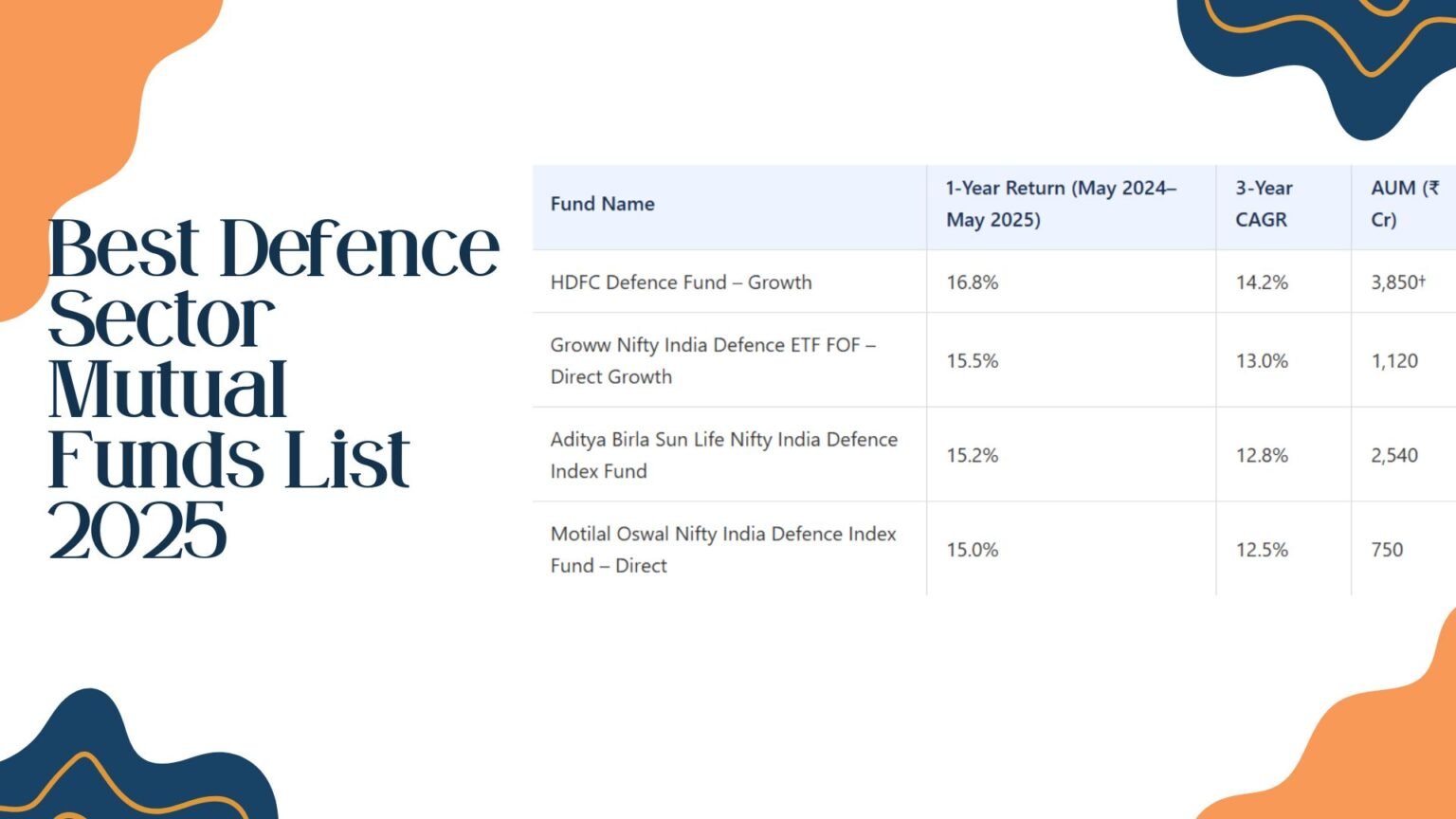📈 Sharpe Ratio in Mutual Funds: Your Personal Guide to Smart Investing
Have you ever taken a look at two mutual funds with the same returns, but found yourself torn as to which is better? I have been there, too, and the answer lies in the powerful yet often overlooked measurement, the Sharpe Ratio.
If you're concerned with risk adjusted performance, stable returns, and smarter portfolio management, this is probably the most crucial concept you'll learn today.
🔍 What is the Sharpe Ratio in Mutual Funds?
The Sharpe ratio in mutual funds is a financial measurement that tells you if the returns are worth the amount of risk you are taking. Developed by Nobel laureate William F. Sharpe, it is considered one of the most trustworthy indicators in professional investing.
In simple terms, this is the formula:
It essentially measures the excess return (the return above a risk-free investment) you receive for each unit of volatility or total risk.
Example Calculation
If a mutual fund provided 14% returns yearly, with 6% being risk free (like from government bonds) and a Standard Deviation of 10%, then:
Sharpe Ratio = (14% - 6%) / 10% = 0.8
That 0.8 means the fund is giving you 0.8 units of excess return per unit of risk not bad, but not amazing either. Let's explore further.
🛠️ Calculate a Fund's Sharpe Ratio
🚦 Why You Should Care about the Sharpe Ratio
It helps you answer crucial questions like:
- "Which fund is *actually* better?"
- "How can I compare funds with similar returns but different risks?"
- "Am I being adequately rewarded for the risk I'm taking?"
✅ Levels the Playing Field
You might be tempted by a fund advertising an 18% return, but you could be deceived if you don't realize it's a highly volatile fund. The Sharpe Ratio helps you see beyond the hype and evaluate performance in the context of risk.
✅ Focuses on Consistent Performance
I would personally prefer a 12% return with a high Sharpe Ratio over a 16% return with a low one. Why? Because that steadiness helps me sleep better at night. Consistent, risk-adjusted returns are a hallmark of a well managed fund.
✅ Aids in Portfolio Optimization
Whether your portfolio is focused on equity, debt, or a balance of both, the Sharpe ratio can guide you toward building a better-diversified portfolio by selecting funds that offer the best return for their level of risk. For instance, analyzing a bond fund's risk profile can be a great way to stabilize your portfolio.
Also Read: Axis Strategic Bond Fund Direct Growth – Returns, NAV & SIP.
📊 What Is a Good Sharpe Ratio?
Let us explain with this simple table:
| Sharpe Ratio | What It Means |
|---|---|
| < 1.0 | Sub-optimal; returns may not justify the risk. |
| 1.0 - 1.99 | Good and acceptable for most investors. |
| 2.0 - 2.99 | Very good, indicating strong risk-adjusted returns. |
| > 3.0 | Excellent and rare, a sign of superior performance. |
When you see a mutual fund with a Sharpe Ratio consistently over 2.0, take notice. High returns with low volatility are not easily achieved over time.
📘 Real World Case Study: Comparing Two Funds
This reminds me of a comparison I did between the Parag Parikh Flexi Cap Fund and the HDFC Flexi Cap Fund.
| Fund | Return (3Y CAGR) | Std. Deviation | Sharpe Ratio |
|---|---|---|---|
| Parag Parikh Flexi Cap | 17.2% | 13.1% | 1.34 |
| HDFC Flexi Cap | 15.6% | 14.2% | 0.94 |
Although HDFC's return was respectable, the risk it took was higher, resulting in a lower Sharpe ratio. The clear winner for better risk-adjusted return was Parag Parikh.
Lesson: When you invest in mutual funds, always check the Sharpe ratio, not just the headline return figures.
Also Read: Franklin India Opportunities Fund – Direct Growth🤔 How You Can Use the Sharpe Ratio
Here's how I use it (and you can, too):
- Filter Funds on Mutual Fund Platforms: Most platforms like Groww, Zerodha Coin, and Value Research display the Sharpe Ratio. Use it as a primary filter to sort funds by their risk-adjusted performance.
- Compare within Categories: Always compare apples to apples. A large-cap fund should be compared with other large-cap funds, not with small-cap funds. Similarly, don't compare a debt fund's Sharpe Ratio to an equity fund's. Each category has a different risk-return profile. Also Read: ICICI Prudential MNC Fund Direct Growth NAV & Returns
- Match with Your Risk Appetite: If you are a conservative investor, you might aim for funds with Sharpe Ratios above 1.5. An aggressive investor might be comfortable with 1.0 or higher if it aligns with their growth objectives.
⚠️ What the Sharpe Ratio Doesn't Tell You
Even though it's incredibly powerful, the Sharpe ratio has limitations:
- It assumes that returns are normally distributed (a bell curve), which isn't always true, especially during market crashes.
- It doesn't specifically measure downside risk. For that, you may want to check the Sortino Ratio, which only considers harmful volatility.
- It bypasses qualitative factors like the fund manager's skill, market-cap exposure, or specific sectoral bets.
Therefore, always use it alongside other metrics such as Alpha, Beta, and the Expense Ratio.
Expert Tip: Combine Sharpe with an SIP Strategy
Did you know that pairing high-Sharpe-ratio mutual funds with a monthly Systematic Investment Plan (SIP) can reduce timing risk even further? It has worked wonders for my core equity holdings, and the result over the past 5 years has been smooth and fruitful.
Final Thoughts: Not Just Invest - Invest Smart
If there is one thing to take away from this article, let it be this:
"High returns mean nothing if they come with sleepless nights."
The Sharpe Ratio empowers you to look beyond the surface to build a portfolio that is not only profitable but also sustainable. So, the next time you are evaluating a mutual fund, don't just chase past performance; look for that sweet Sharpe Ratio. It might just be your best shortcut to long term wealth.
Frequently Asked Questions
A metric that establishes the efficiency with which a mutual fund provides excess returns for every unit of risk incurred. This way, investors can gauge the fund's performance relative to its risk more accurately.
Generally, a Sharpe Ratio above 1.0 indicates good risk-adjusted returns and is not bad, while above 2.0 is excellent and indicates that the fund has been highly efficient in its performance.
This is the formula used: (Fund Return – Risk-Free Rate)/Standard Deviation of Fund Returns The result tells you how well the fund rewards you for taking risk.
Identifies the funds that ensure higher stability and consistency in returns. High Sharpe Ratios indicate your returns are not with too much volatility.
Both have the same performance, but one is much more volatile than the other. In that case, if both risk differentials are identified, one with lower volatility gives a higher Sharpe Ratio. Thus making it more attractive from a risk perspective.






📢 Comment Below:
Which mutual fund in your portfolio has the best Sharpe Ratio?